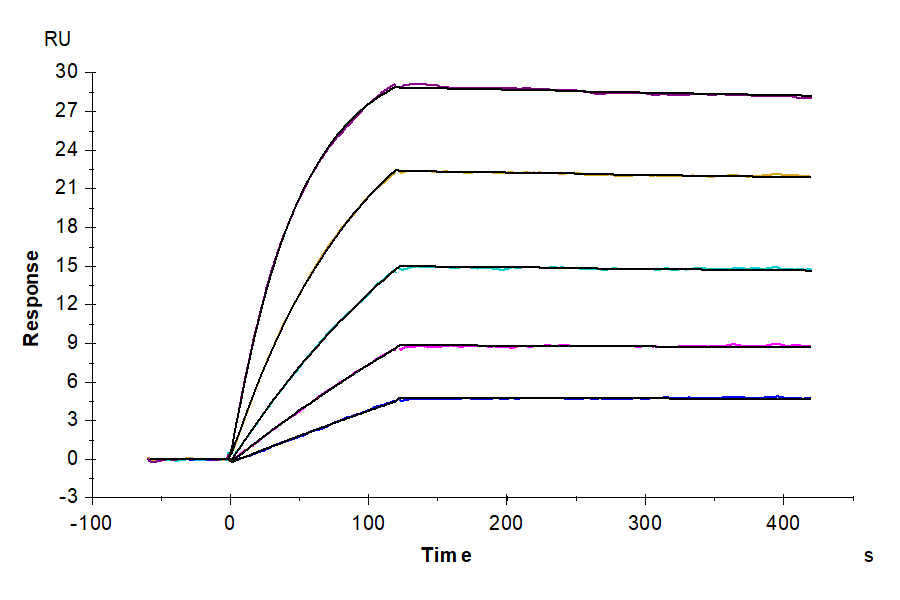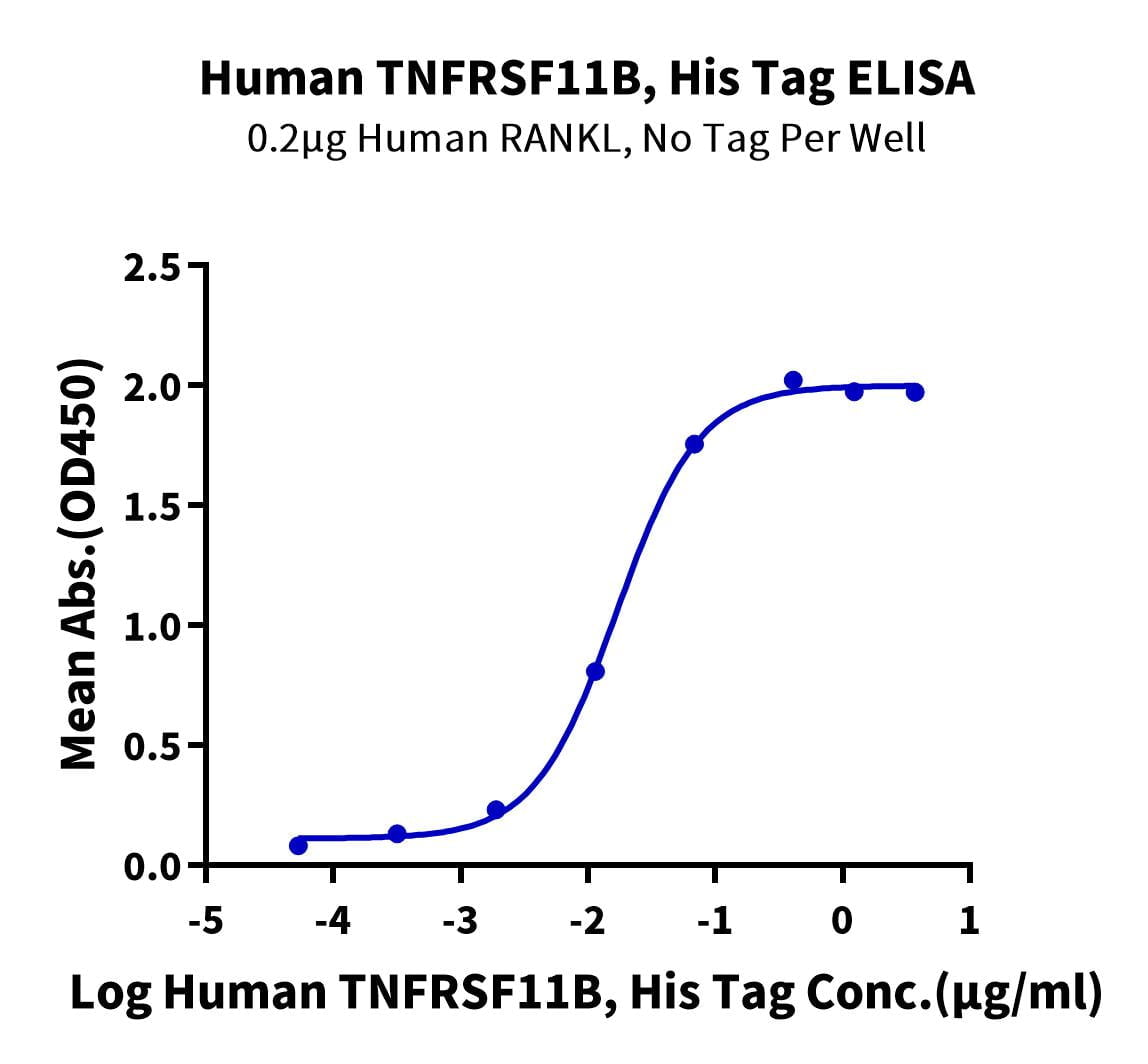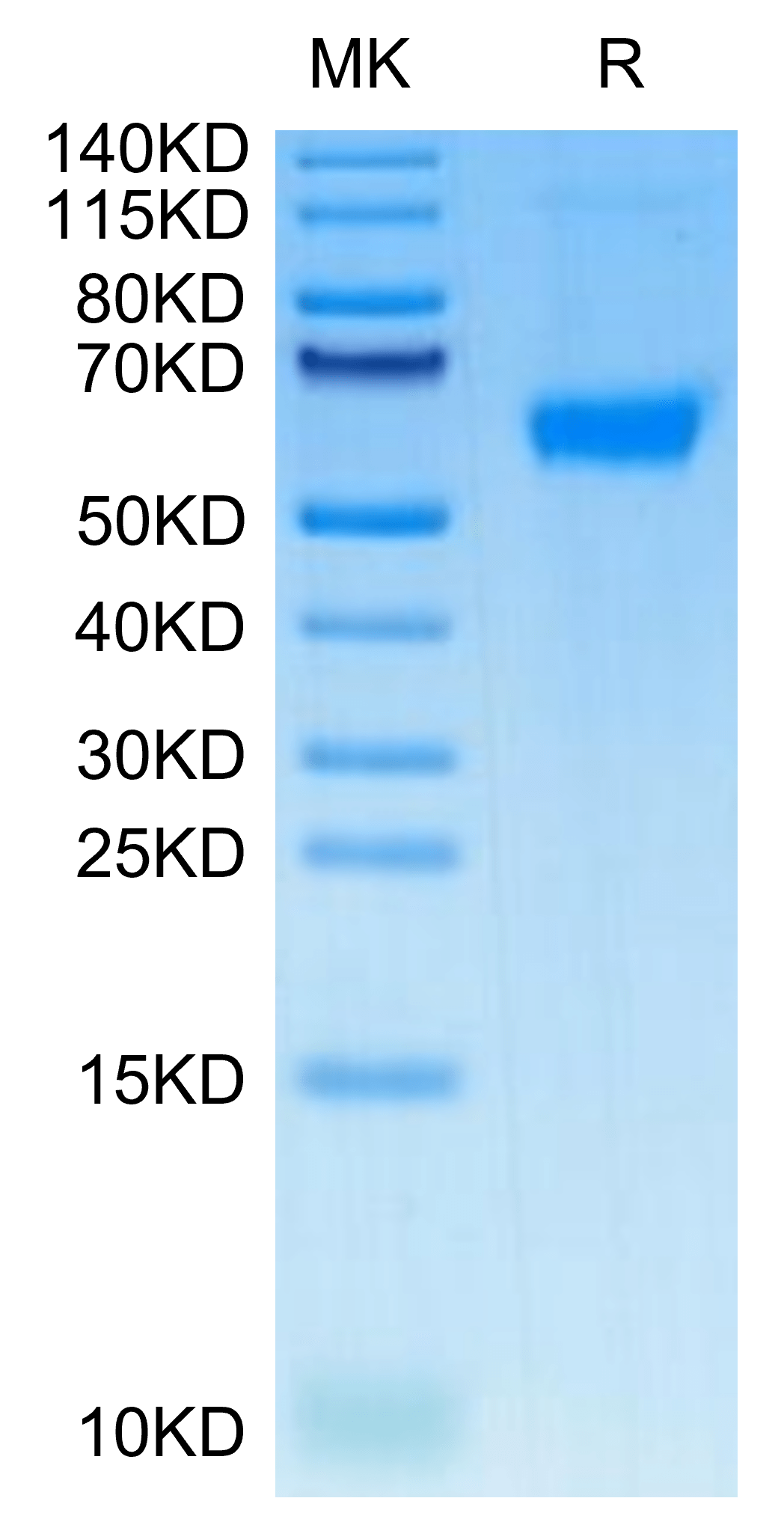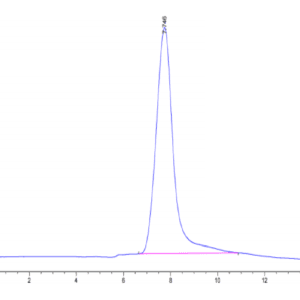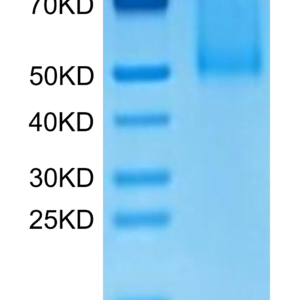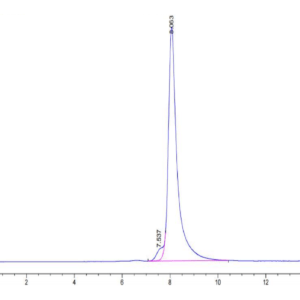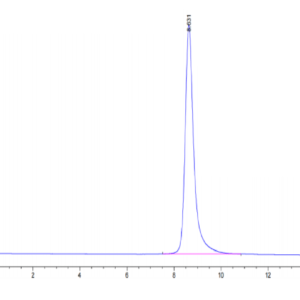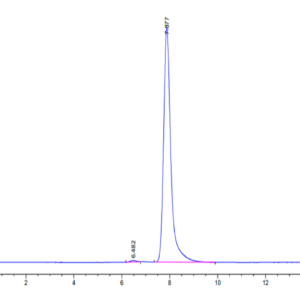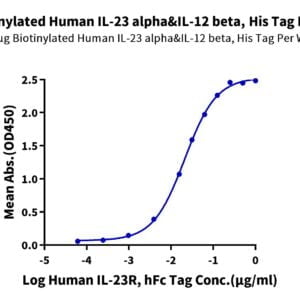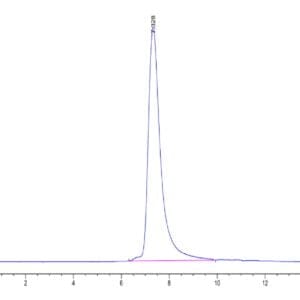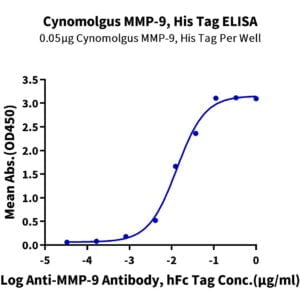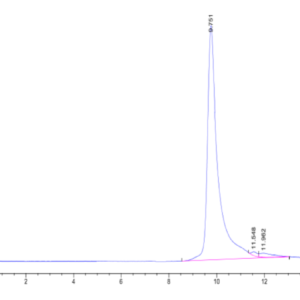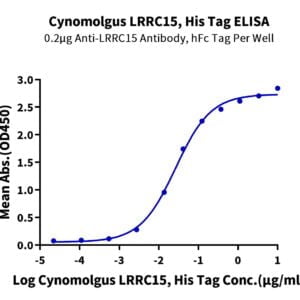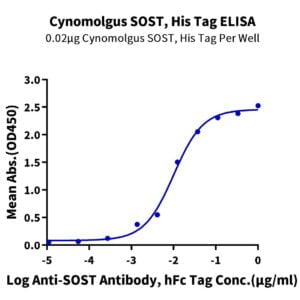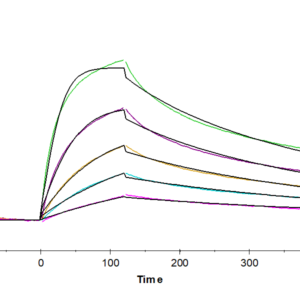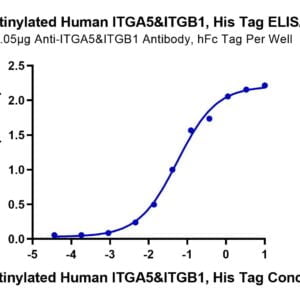| Weight | 1 lbs |
|---|---|
| Dimensions | 9 × 5 × 2 in |
| accession | O00300 |
| express system | HEK293 |
| product tag | C-His |
| purity | > 95% as determined by Tris-Bis PAGE |
| background | Osteoprotegerin (OPG) is a key regulator in bone metabolism, that also has effect in vascular system. Studies suggest that osteoprotegerin is a critical arterial calcification inhibitor, and is released by endothelial cells as a protective mechanism for their survival in certain pathological conditions, such as diabetes mellitus, chronic kidney disease, and other metabolic disorders. |
| molecular weight | The protein has a predicted MW of 44.71 kDa. Due to glycosylation, the protein migrates to 55-65 kDa based on Tris-Bis PAGE result. |
| available size | 100 µg, 500 µg |
| endotoxin | Less than 1EU per μg by the LAL method. |
Human TNFRSF11B Protein 2975
$300.00 – $1,000.00
Summary
- Expression: HEK293
- Functional: Yes (ELISA)
- Amino Acid Range: Glu22-Leu401
Human TNFRSF11B Protein 2975
| protein |
|---|
| Size and concentration 100, 500µg and lyophilized |
| Form Lyophilized |
| Storage Instructions Valid for 12 months from date of receipt when stored at -80°C. Recommend to aliquot the protein into smaller quantities for optimal storage. Please minimize freeze-thaw cycles. |
| Storage buffer Shipped at ambient temperature. |
| Purity > 95% as determined by Tris-Bis PAGE |
| target relevance |
|---|
| Osteoprotegerin (OPG) is a key regulator in bone metabolism, that also has effect in vascular system. Studies suggest that osteoprotegerin is a critical arterial calcification inhibitor, and is released by endothelial cells as a protective mechanism for their survival in certain pathological conditions, such as diabetes mellitus, chronic kidney disease, and other metabolic disorders. |
| Protein names Tumor necrosis factor receptor superfamily member 11B (Osteoclastogenesis inhibitory factor) (Osteoprotegerin) |
| Gene names TNFRSF11B,TNFRSF11B OCIF OPG |
| Mass 9606Da |
| Function Acts as a decoy receptor for TNFSF11/RANKL and thereby neutralizes its function in osteoclastogenesis. Inhibits the activation of osteoclasts and promotes osteoclast apoptosis in vitro. Bone homeostasis seems to depend on the local ratio between TNFSF11 and TNFRSF11B. May also play a role in preventing arterial calcification. May act as decoy receptor for TNFSF10/TRAIL and protect against apoptosis. TNFSF10/TRAIL binding blocks the inhibition of osteoclastogenesis. |
| Subellular location Secreted. |
| Tissues Highly expressed in adult lung, heart, kidney, liver, spleen, thymus, prostate, ovary, small intestine, thyroid, lymph node, trachea, adrenal gland, testis, and bone marrow. Detected at very low levels in brain, placenta and skeletal muscle. Highly expressed in fetal kidney, liver and lung. |
| Structure Homodimer. Interacts with TNFSF10 and TNFSF11. |
| Post-translational modification N-glycosylated. Contains sialic acid residues.; The N-terminus is blocked. |
| Target Relevance information above includes information from UniProt accession: O00300 |
| The UniProt Consortium |
Data
Publications
Publications
| pmid | title | authors | citation |
|---|---|---|---|
| We haven't added any publications to our database yet. | |||
Protocols
| relevant to this product |
|---|
Documents
| # | ||
|---|---|---|
| Please enter your product and batch number here to retrieve product datasheet, SDS, and QC information. | ||
